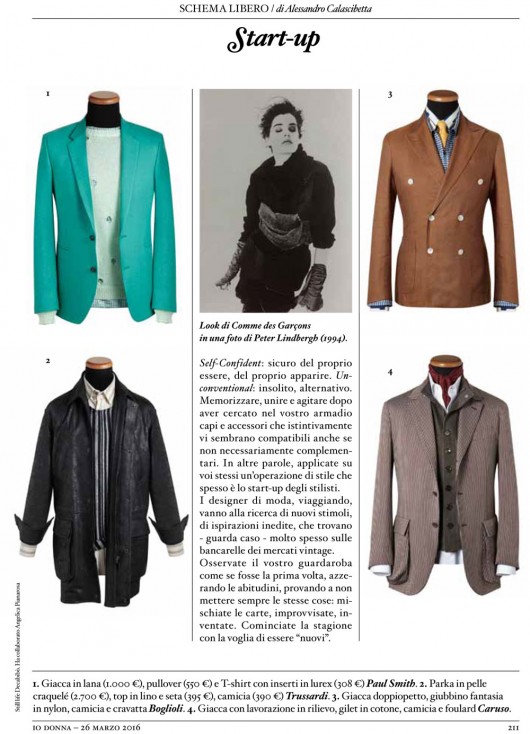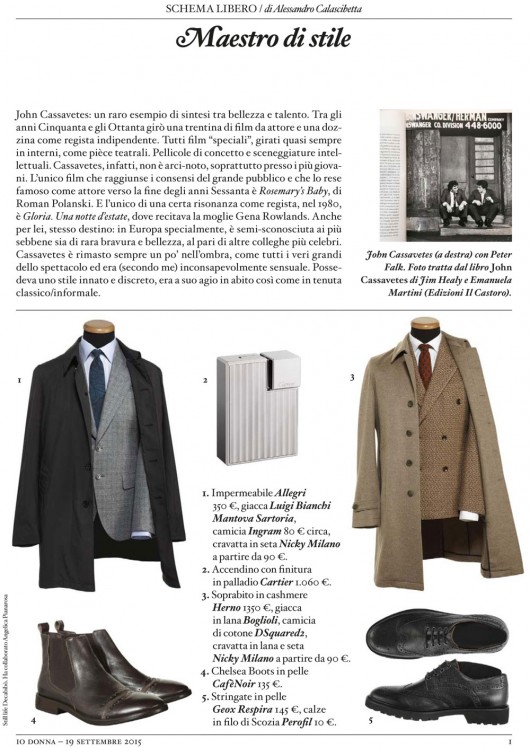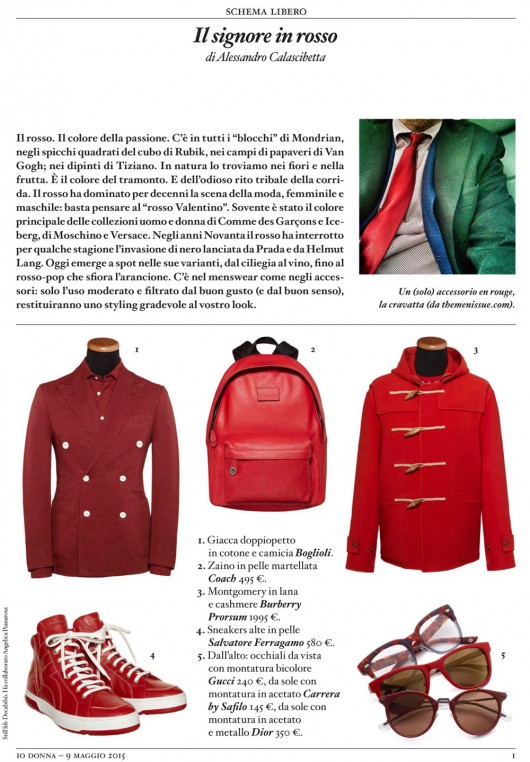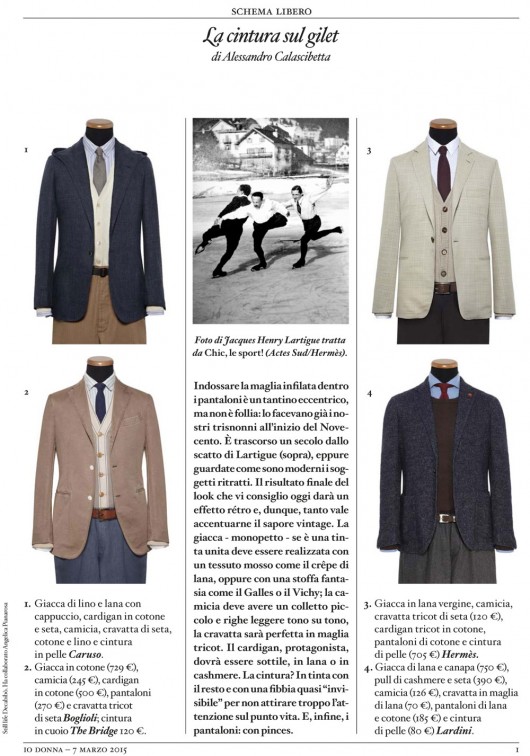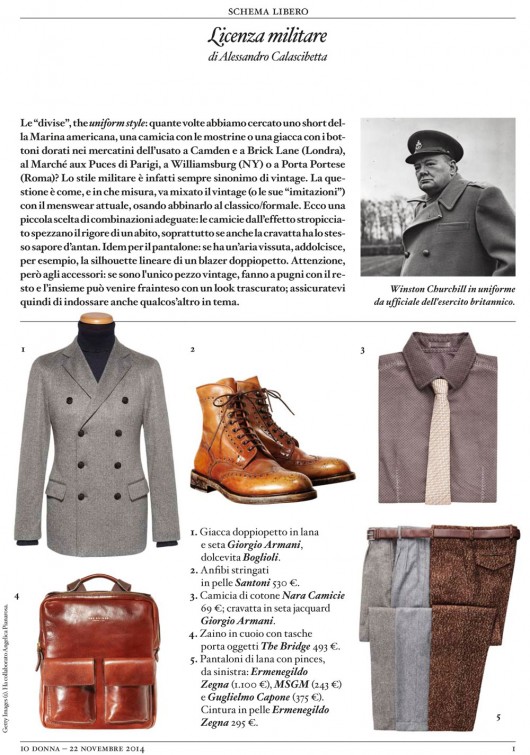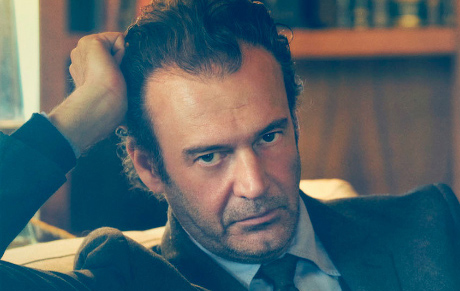IO DONNA SCHEMA LIBERO START-UP
Start-up. Self-confident: being aware of who we are and how we look like. Unconventional: unusual, different. Memorizing, putting together and mixing garments from our closet that instinctively seem compatible to us but not necessarily complementary. In other words, apply on yourself a style procedure that is often the start-up for fashion designers. They, travelling, go in search of new ideas, original inspirations, that they usually find – strangely enough – on the stalls of vintage markets. Look at your wardrobe like it’s the first time, eliminating the habits, trying not to wear the same things: mix up the cards, improvise, invent. Start the season with the will of being “new”. A look of Comme des Garcons in a picture of Peter Lindbergh (1994)





